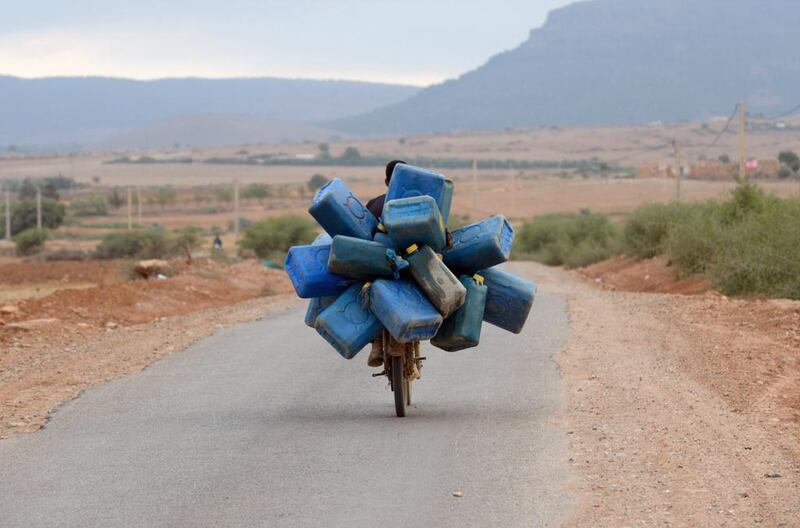Morocco may buy liquefied natural gas (LNG) from Qatar, Russia or the United States as part of plans to build a US$4.6 billion LNG import terminal by 2021, its energy minister Abdelkader Amara said yesterday.
Morocco, which is the biggest importer of energy in the Middle East and North Africa region, is seeking to build an LNG terminal in order to help diversify its energy mix. LNG is gas cooled to a liquid to be transported by ships.
By 2020, Morocco wants to produce 42 per cent of its power from solar, wind and hydro power plants, and the rest from coal and natural gas. Currently 40 per cent is produced from coal and around 14 per cent from fuel, he said.
Construction of the LNG import terminal will start in 2017.
Morocco will discuss importing LNG under long-term agreements.
If all else fails, it will buy LNG in international bids, he said. “In the first phase we will discuss with friendly countries like Qatar, the US, Russia and other countries,” Mr Amara said. “If there is a good [long-term] offer, we will take it.”
Morocco will start a roadshow next year to discuss signing long-term agreements with LNG producers, he said, starting with Qatar. The terminal, which will cost around US$4.6 billion including a power plant, will be 100 per cent financed by the private sector. The government plans to pick local and international investors in 2015 and 2016, he said.
In phase one of the LNG project, around 3 billion cubic metres of gas will be imported to produce 2.7 giga watts (GW) of electricity by 2021. The second phase will include importing 2 billion cubic metres of gas for the industrial sector. In 2026, Morocco will import an additional 5 billion cubic metres of gas, he said.
Morocco will also start constructing an additional three new gas-power plants, Mr Amara said yesterday. It will also convert an existing plant.
By 2020 the country will produce 12GW compared to 7GW currently.
Separately, Morocco expects to drill more oil and gas wells as part of plans to boost its gas reserves in the next three years.
Around 34 companies, including France’s Total and US’s Chevron are looking for oil and gas, onshore and offshore.
“This year we were supposed to drill 27 wells. We have drilled so far half of them and will continue drilling in first [quarter] of 2015. In addition to the 14 wells, there will be more wells in 2015,” said Mr Amara.
“We believe in the next three years we will find some natural gas reserves. We are going to move from millions to billions cubic metres (of gas).”
Currently, Morocco has 100 million cubic metres of gas reserves, he said at an Abu Dhabi energy conference.
Total cost of investments in drilling this year was around 500 million euros and is expected to increase next year, he said.
The central bank forecasts gross domestic product to grow 4.4 per cent next year, up from 2.5 per cent this year, thanks to good rainfall which will boost agricultural output.
It said inflation would remain “relatively low, with balanced risks,” forecasting it at 0.4 per cent for the whole of this year, rising to 1.2 per cent next year.
* with agencies
dalsaadi@thenational.ae
Follow The National's Business section on Twitter





